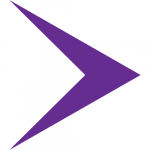 Indicator framework
Indicator framework  Case study: Georgia and international advocacy for SDGs
Case study: Georgia and international advocacy for SDGs
International- and regional-level advocacy for SDGs
International-level advocacy relating to gender equality, macroeconomics, and the SDGs typically happens in the High Level Political Forum (HLPF) and Financing for Development (FfD) processes.
Each year during the HLPF, member states, international institutions, and civil society meet to evaluate progress, challenges, and best practices relating to a specific set of goals. A group of countries are also reviewed on their implementation of Agenda 2030 and the SDGs based largely on their Voluntary National Reports (VNRs).1The format of the HLPF is currently under review. Civil society organisations are working to ensure that it becomes a more inclusive, democratic and effective process. However, as of the writing of this starter kit, no clear changes had been made. See the letter from the co-facilitators to the President of the UN General Assembly, with regards to this review. For ongoing and up-to-date information on the HLPF process, please refer to the Women’s Major Group website.
Civil society organisations can be part of this process through the Major Groups and Other Stakeholders Groups (MGoS) accepted as official stakeholders to the process. This allows CSOs to access meetings, contribute to panels and sessions as representatives of their MGoS Group, and benefit from the collaborative work and experience.2More official information about Major Groups and Other Stakeholders can be accessed at: https://sustainabledevelopment.un.org/majorgroups/about
In addition, CSOs can contribute to the process with ‘Civil Society Alternative Reports’. These reports are seen as complementary to the VNR process and serve a similar purpose as the CEDAW shadow reports.3As will be explained in the next subheading, these reports serve as advocacy tools at all levels. More information on engagement of CSOs with VNRs can be found at: http://www.womenmajorgroup.org/wp-content/uploads/2018/11/IWHC_WMG_Guide_M3_Spreads_Preview.pdf Jointly or individually, CSOs use these reports to provide additional or alternative information relating to issues raised in the VNRs of their country. This includes reporting on their lived realities and experiences regarding SDG implementation and policy within their country or region, or foreign countries whose policies and activities impact the rights of communities in their countries. Unlike CEDAW reviews, there is no structured process for presenting these reports, i.e. there are no deadlines, no official submission process, and no required format. However, these alternative reports can still be used for:
- Advocating with the VNR country in person and/or through the alternative report, and highlighting the gaps and discrepancies between the official VNR report and the alternative report.
- Establishing contact with the officials from the national focal point for SDGs and relevant ministries at the HLPF.
- Advocating with other member states and institutions that can ask questions to the VNR country after its presentation.
- Guiding and aiding the statement made and questions asked to the VNR country by the MGoS group (when time allows).
The advocacy of CSOs should not end at the HLPF. The follow-up to the process at the national level is also an important part of the advocacy processes.4For more information on participating in HLPF, please refer to the Women’s Major Group website. IWRAW Asia Pacific’s CEDAW-SDGs Tool demonstrates how to harmonise two instruments as part of the reporting processes.
 Indicator framework
Indicator framework  Case study: Georgia and international advocacy for SDGs
Case study: Georgia and international advocacy for SDGs
Footnotes
- 1The format of the HLPF is currently under review. Civil society organisations are working to ensure that it becomes a more inclusive, democratic and effective process. However, as of the writing of this starter kit, no clear changes had been made. See the letter from the co-facilitators to the President of the UN General Assembly, with regards to this review. For ongoing and up-to-date information on the HLPF process, please refer to the Women’s Major Group website.
- 2More official information about Major Groups and Other Stakeholders can be accessed at: https://sustainabledevelopment.un.org/majorgroups/about
- 3As will be explained in the next subheading, these reports serve as advocacy tools at all levels. More information on engagement of CSOs with VNRs can be found at: http://www.womenmajorgroup.org/wp-content/uploads/2018/11/IWHC_WMG_Guide_M3_Spreads_Preview.pdf
- 4For more information on participating in HLPF, please refer to the Women’s Major Group website. IWRAW Asia Pacific’s CEDAW-SDGs Tool demonstrates how to harmonise two instruments as part of the reporting processes.

